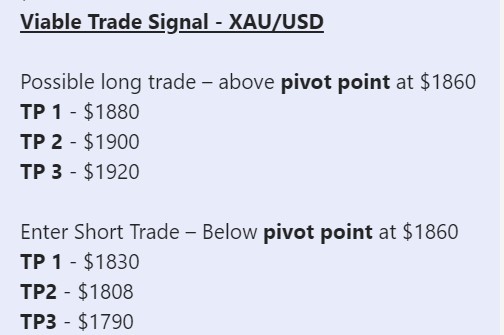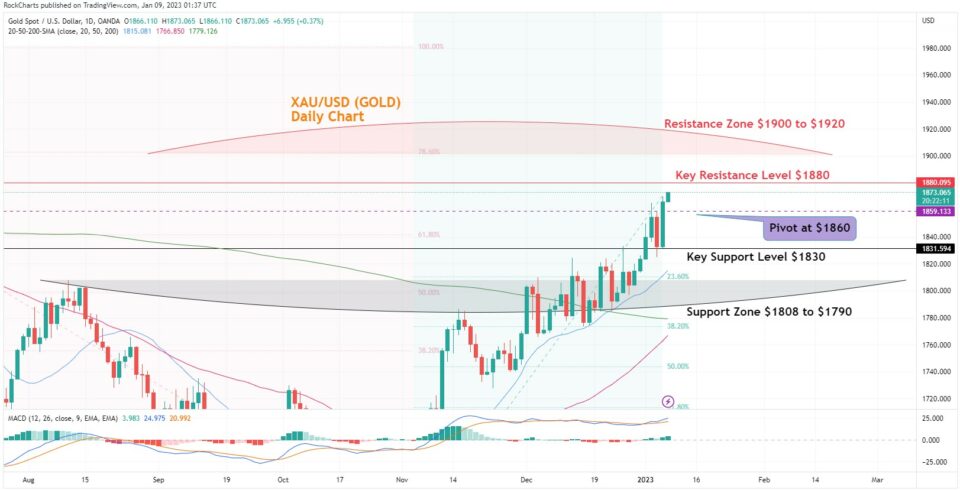XAU/USD daily chart
Chart Analysis:
Gold jumped back up to 1870, its multi-month high after the US 10-year treasury fell by 15bps to 3.6% on Friday, the lowest in three weeks. The factor behind the enthusiasm amongst the investors was US wage growth that unexpectedly slowed in December and earnings for previous months were revised sharply lower. This scrambled the gold investors to push the prices back up above $1870 from $1832.
The gold chart shows that the pair jumped up by $34 on Friday and is now already about to test the Key resistance level on the chart at $1880 depicting the next upside break in the gold prices. The 20-day SMA crossed the 50-day SMA earlier on 22nd December and we indicated that the costs would jump higher from this point on no the pair is already testing the updated Key resistance level on the chart at $1880. There could be a drop in the gold prices from under that Resistance zone to complete the whole cycle of the SMA Cross signal sooner or later. The MACD indicator is comfortably moving higher in the overbought zone and any correction from here could be sharper.
Daily Chart Directional bias - 1 Week
- Resistance Zone: $1900 to $1920
- Key Resistance Level: $1880
- Major Pivot Point: $1860
- Key Support Level: $1830
- Support Zone: $1808 to $1790
- 200 Day SMA – Green Line
- 50 Day SMA – Red Line
- 20 Day SMA – Blue Line
Chart Trading Insights
Trade Insights – XAU/USD
The Chart shows viable long positions above the major pivot point at $1860 heading towards the first target of the key resistance level at $1880 and then the test of the key resistance zone between $1900 to $1920.
Alternatively, possible short positions below the major pivot point at $1860 with the target of the key support level at $1830 then the test of the support zone between $1808 to $1790.

